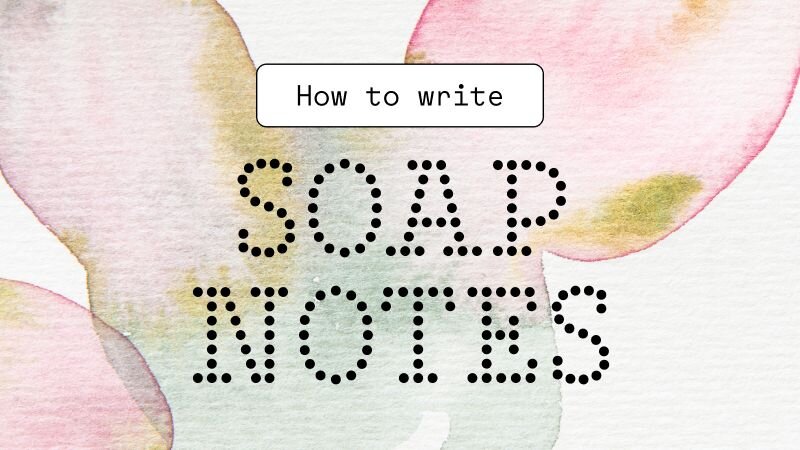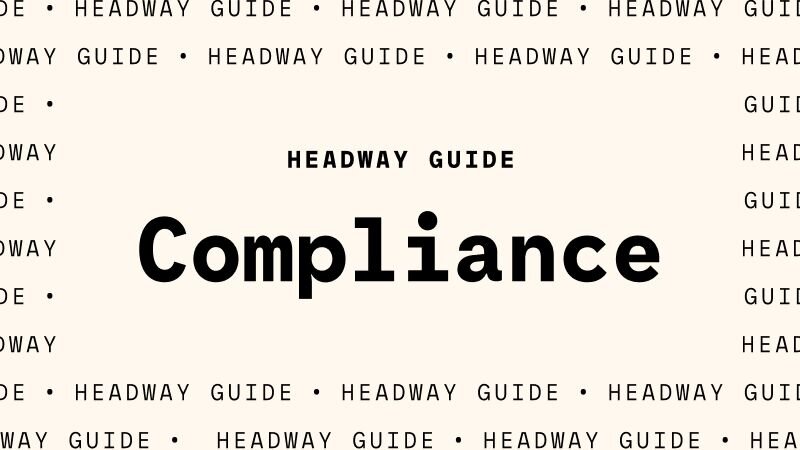
How to write progress notes
Progress notes are the core piece of documentation a mental health care provider should write after each session with a client, but it’s more than just a record of what happened in the session.

Here’s how SOAP notes can help you write better, faster notes — and effectively document your work as a clinician.
Writing in a journal is easy: There are no rules, and it’s only for yourself. But progress notes come with a different kind of pressure.
While it might be intimidating to translate your care into a note, it’s simpler than it seems. Especially when you’re using a template like a SOAP note.
Here’s how SOAP notes can help you write better, faster notes — and effectively document your work as a clinician.
SOAP notes are a specific format for writing progress notes as a behavioral health clinician. They contain four primary sections, represented by its acronym: Subjective, Objective, Assessment, and Plan.
If you’re using a SOAP note template and filling out every section as directed, you should feel good about how your notes stack up to compliance expectations. Each section of a SOAP note is designed to help you document the most critical aspects of your session for compliance with insurance billing, including elements of a mental status exam and risk assessments.
A SOAP note’s holistic approach naturally encourages you as a provider to collect comprehensive insight about your client and their treatment. And because SOAP notes are widely recognized and used in many different healthcare settings, other care providers can easily recognize and review your mental healthcare records to provide continuity of care for your clients.
Headway’s built-in note template uses the SOAP note format, and includes one-click check boxes to help you fulfill the mental status exam and risk assessment on your notes.
As you sit down to write a SOAP note, reflect on your session and allow the four sections of the note template to guide you to document the most important aspects of your client’s current state and the progression of your treatment.
The subjective section is where you document what your client is telling you about how they feel, their perceptions, and the symptoms.
It’s most important to document the things that relate to the client’s diagnosis. “For example, if your client is depressed, what’s telling you that they’re depressed?,” says Natalia Tague, LPC and Headway’s Clinical Engagement Lead. “The subjective section might include that the client says they've been crying every day, that they can't sleep, or that they've lost their appetite.”
Many providers elect to include a direct quote from the client in the subjective section of their SOAP notes, which helps demonstrate to insurers that the session was unique and veritable.
The objective section should include the therapist's observations, including measurable, observable data.
Consider what you’re seeing in the session that reflects what’s going on with the client in that moment.
“Literally: What are you seeing?,” says Natalia. “It’s things like: My patient's crying while we speak, they have trouble making eye contact, they seem disheveled, or they look like they haven't showered in a few days.”
The assessment is the therapist's professional evaluation of the client’s condition, as captured in the subjective and objective sections. It should include their diagnosis, progress, risk assessment, formulation of the situation, and a review of the treatment plan.
In other words: This is where you should sum up the first two sections into a consideration of what’s going on with your client overall.
“The assessment is really just: What’s happening here?,” says Natalia. “What is all of this telling you about the bigger picture: Are they getting better? Are they getting worse? Has there been a drastic change?”
The plan section is where you document your intended actions moving forward. It includes treatment strategies, therapeutic goals, recommended interventions, and any necessary adjustments to the client's treatment plan.
It’s the future-looking piece of the care puzzle: The client has told you what’s going on. You’ve said what you’re observing. You put those two together into an assessment. And now it’s time to plan for the care you want to provide in future sessions.
“You might write that we’re going to meet weekly. Or we’re going to move to meet monthly because they seem to be doing okay. Another part of it might be saying: I think we need to process more of these triggers and build out some coping strategies,” says Natalia. “So the plan is just: Based on your assessment, where do you want to go next?”
It’s important that SOAP notes, or notes in any template style follow the requirements of a progress note, such as including session details like the start and stop time and place of service.
Client Full Name: Connor Client
Client Date of Birth: 2/2/1992
Date of Service: 7/10/2023
Exact start time and end time: 1:33 pm – 2:30 pm: 57 mins
Session Location: 123 Serenity Lane, Miami, FL 33143
Diagnosis: (F32.1) Major depressive disorder, single episode, moderate)
Subjective:
During the session, the client, Connor, reported a significant improvement in his overall mood since our last meeting. He has been consistently utilizing coping mechanisms that were previously discussed and has been making an effort to engage in activities that he once found enjoyable. He expressed that his depressive symptoms have decreased in both intensity and frequency. Additionally, Connor mentioned a recent family gathering where he felt more engaged and connected with his loved ones. This positive experience provided him with a sense of social support, which he believes contributed to his improved mood. However, Connor expressed ongoing concerns about his sleep patterns, noting occasional difficulty falling asleep and early awakenings.
Objective:
Since our last session, Connor does not present a risk to self or others. His affect during the session was brighter and more animated compared to prior meetings. He actively participated in the session, showing improved eye contact and verbal expression. His body language suggested a decrease in overall tension compared to previous sessions. Connor's energy levels have improved, and he reported engaging in physical activities such as walking and jogging on a regular basis. His mood was calm, and his affect was appropriate for the course of the session.
Assessment:
Based on today's session, it is clear that Connor has made significant progress in managing his depressive symptoms. The combination of psychoeducation on coping strategies and increased engagement in pleasurable activities seems to be contributing positively to his overall well-being. His affect, mood, and verbal expression have all improved, indicating a positive response to therapy. However, Connor's ongoing concerns regarding his sleep patterns warrant further exploration. His difficulty falling asleep and early morning awakenings may indicate the presence of underlying stressors, which need to be identified and addressed.
Plan:
Moving forward, we will continue to reinforce and build upon effective coping strategies, such as mindfulness and behavioral activation. Additional attention will be given to Connor's sleep disturbances. We will explore potential triggers and stressors contributing to these issues and provide psychoeducation on sleep hygiene and relaxation techniques. The development of additional relaxation techniques to address his sleep concerns will also be considered. Connor's progress thus far is promising, and continued therapy sessions will aim to further improve his mood, manage his depressive symptoms, and address his sleep concerns.
This document is intended for educational purposes only. Examples are for purposes of illustration only. It is designed to facilitate compliance with payer requirements and applicable law, but please note that the applicable laws and requirements vary from payer to payer and state to state. Please check with your legal counsel or state licensing board for specific requirements.
While there are many options for documentation, Headway's in-product templates are designed to make note-taking fast and efficient, all while helping to take out the guesswork.
Plus, our templates are included at no additional cost for Headway providers.
Headway’s team and tools are here to make everything about working with insurance companies (including compliance!) as easy as possible.

Progress notes are the core piece of documentation a mental health care provider should write after each session with a client, but it’s more than just a record of what happened in the session.

Navigating compliance can be time-consuming and stressful. We’re committed to changing that.

Based on our conversations with insurers, here are 10 of the items most commonly missing from charting documentation, including examples of what it takes to meet the requirements for each.